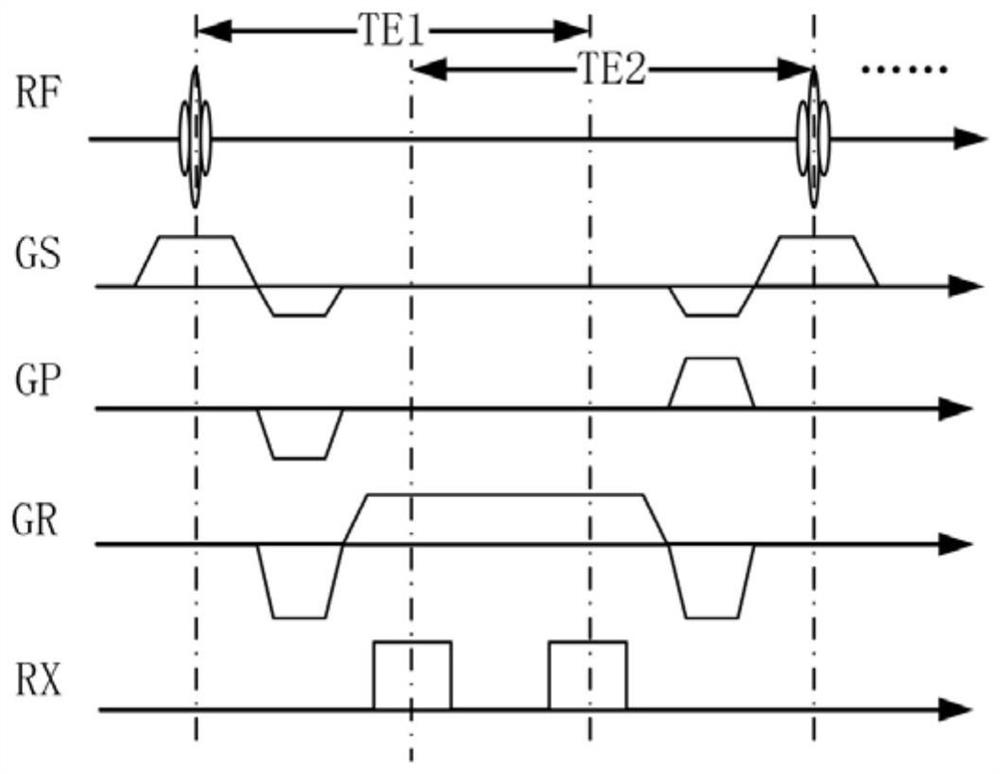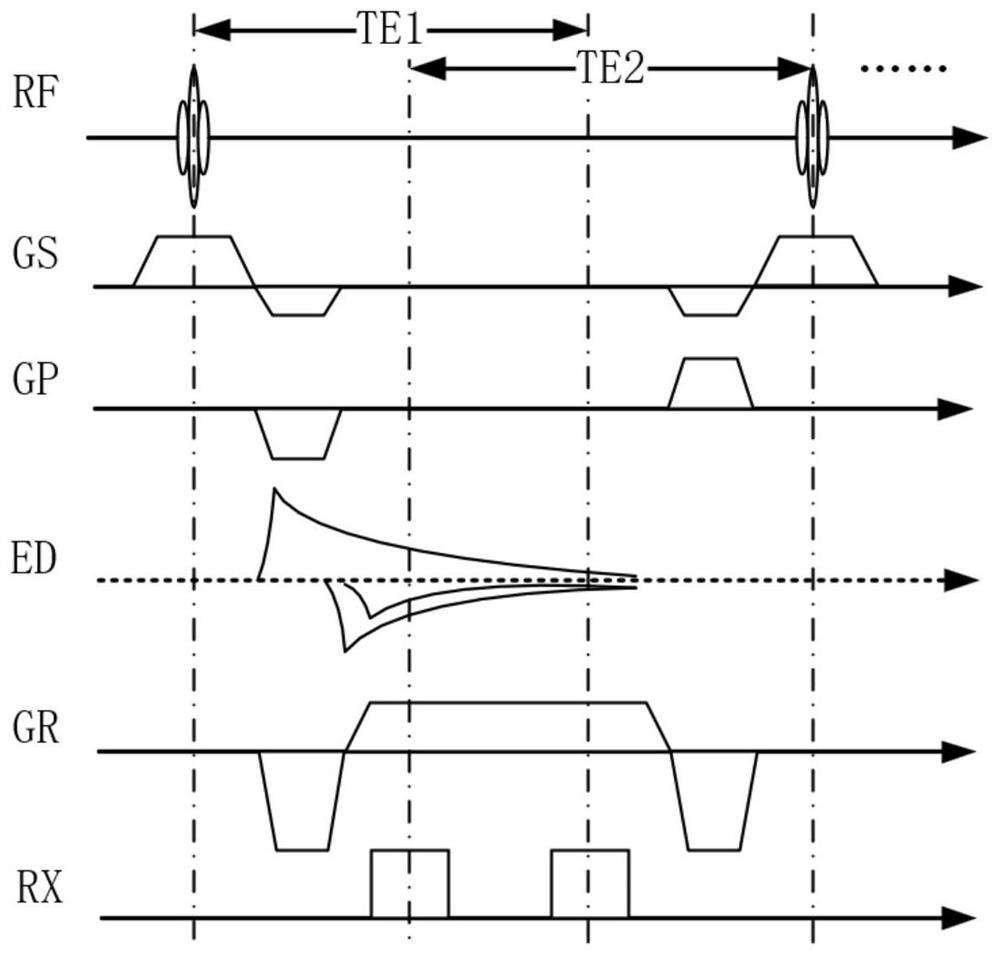3D-DESS sequence optimization method, 3D-DESS optimization sequence and magnetic resonance imaging shimming method
A magnetic resonance imaging and optimization method technology, applied in the direction of measuring magnetic variables, measuring devices, instruments, etc., can solve the problems of poor shimming effect, readout gradient eddy current cannot be eliminated, etc., to reduce influence, reduce phase shift, Eliminates the effect of gradient field phase shift
- Summary
- Abstract
- Description
- Claims
- Application Information
AI Technical Summary
Problems solved by technology
Method used
Image
Examples
Embodiment 1
[0049] Such as Figure 1-2 As shown, the eddy current in the readout gradient direction of the shimming sequence of the 3D-DESS (three-dimensional double-echo steady state sequence) in the prior art decreases with time during signal acquisition, and the eddy current of the readout gradient during two signal acquisitions The eddy current is different, and there is no simple linear relationship, so it cannot be eliminated, resulting in poor shimming effect and affecting the imaging quality of magnetic resonance images. For this reason, this embodiment proposes a 3D-DESS sequence optimization method to optimize the existing 3D-DESS sequence to eliminate the influence of eddy currents on shimming.
[0050] Such as image 3 As shown, this embodiment provides a method for optimizing a 3D-DESS sequence, the 3D-DESS sequence includes two echo signal acquisitions, and the method includes:
[0051] Step a: Divide the readout gradient GR of the two echo signal acquisitions, and establi...
Embodiment 2
[0062] See Figure 4-5 On the basis of the first embodiment, this embodiment also provides a 3D-DESS optimized sequence, the preferred 3D-DESS sequence is obtained by the method for optimizing the 3D-DESS sequence as described in the first embodiment.
[0063] Among them, it should be noted that, in Figure 4 Among them, RF represents the time axis of radio frequency pulse, GS represents the time axis of layer selection gradient, GP represents the time axis of phase encoding gradient, ED represents the time axis of eddy current, GR represents the time axis of readout gradient, and RX represents the time axis of collecting and receiving signals.
[0064] Specifically, with Figure 1-2 compared to, Figure 4-5 On the readout gradient GR axis, the readout gradient of the two signal acquisitions is divided, and a reverse compensation gradient with an intensity h is established between the two sampling intervals, by adjusting the intensity h of the reverse compensation gradient ...
Embodiment 3
[0067] Please refer to Figure 5-8 On the basis of Embodiment 2, this embodiment also provides a shimming method for reducing the influence of eddy currents in a magnetic resonance imaging system. The 3D-DESS optimization sequence described in Embodiment 2 is applied in this embodiment, so The shimming methods described include:
[0068] Step 1: Using the 3D-DESS optimization sequence to scan and collect image data of the imaging region;
[0069] Step 2: performing signal separation on the two collected echo signals, and respectively obtaining the corresponding first phase data and second phase data in the readout gradient GR;
[0070] Wherein, it should be noted that the two echo signals include the FID echo signal excited by the first RF pulse and the echo signal refocused by the second RF pulse; in addition, in order to ensure that the second RF pulse The converged echo signal is a spin echo signal, more preferably, the echo time TE of the FID echo signal 1 and the echo ...
PUM
 Login to View More
Login to View More Abstract
Description
Claims
Application Information
 Login to View More
Login to View More - R&D
- Intellectual Property
- Life Sciences
- Materials
- Tech Scout
- Unparalleled Data Quality
- Higher Quality Content
- 60% Fewer Hallucinations
Browse by: Latest US Patents, China's latest patents, Technical Efficacy Thesaurus, Application Domain, Technology Topic, Popular Technical Reports.
© 2025 PatSnap. All rights reserved.Legal|Privacy policy|Modern Slavery Act Transparency Statement|Sitemap|About US| Contact US: help@patsnap.com



